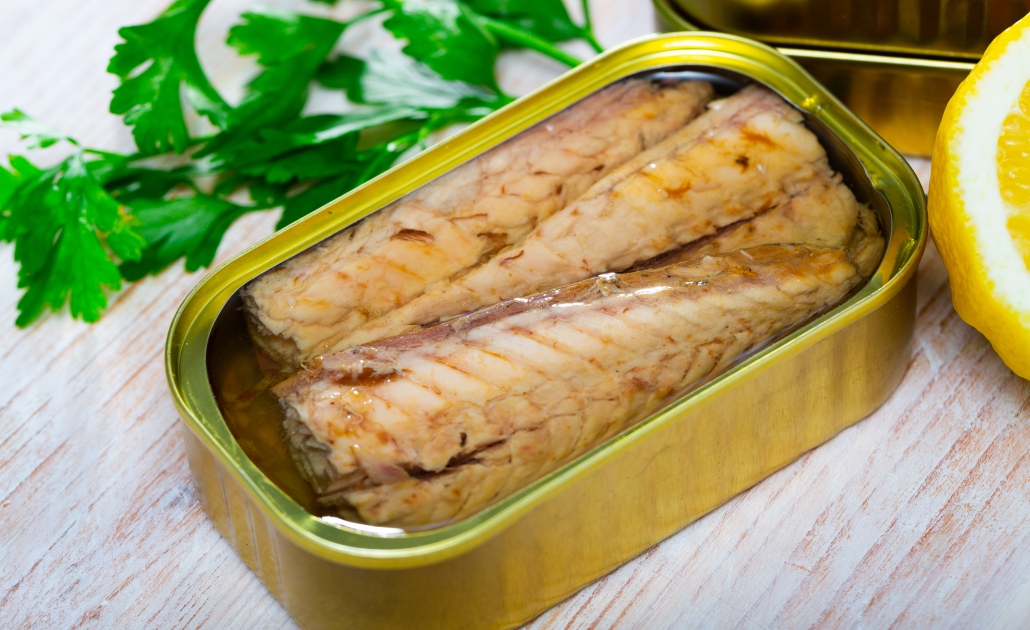We include products in articles we think are useful for our readers. If you buy products or services through links on our website, we may earn a small commission.
Keto Fish: The Top 6 Fatty Fish to Eat on a Ketogenic Diet
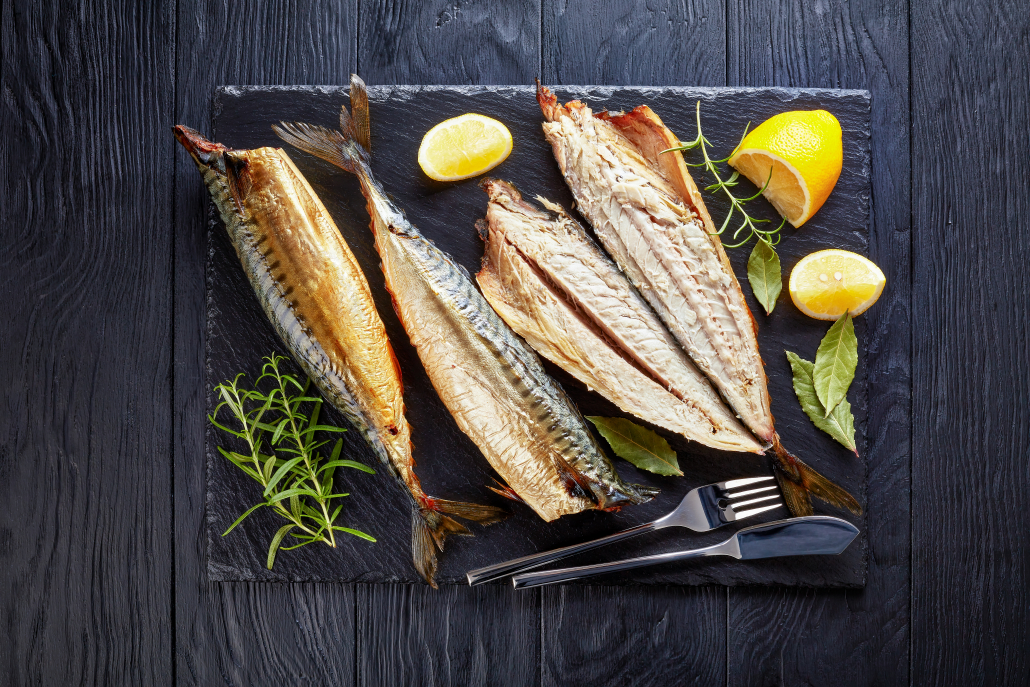
Table of Contents
The best fish for keto are fatty and loaded with nutrients. Keto fish provide the basis of the pescatarian keto, and Mediterranean keto diets, while offering welcome variety to standard keto and carnivores diets.
Though almost all fish contain some amount of toxic compounds from pollution, the fatty fish examples here are many of the lowest toxicity types.
Let’s explore some of the best fish for keto.
Choosing the Best Fish for Keto
A ketogenic diet calls for consuming high-fat, low-carb, and moderate protein. When it comes keto fish, carbs aren’t a concern, but most fish are lean and high in protein. So finding the most fatty fish is key.
A good rule of thumb is to look for keto fish that come closest to these basic keto macronutrient ranges:
- 70-80% of calories from fat
- 15-30% calories from protein
- 0-10% calories from carbohydrate
It’s worth noting, however, that you can boost the fat content of a keto fish meal by simply adding a couple tablespoons of butter, ghee, tallow, and coconut oil.
Luckily for keto dieters, the best fish for keto are also some of the most accessible varieties of fish anywhere. In fact, 5 of the top six options can be found in canned form.
Nutrition info per 100g
| Type of Fish | Calories | Fat | Protein | Carbs | % Calories from fat | % Calories from protein | |
| #1 | Atlantic Mackerel | 290 | 20.3 | 27 | 0 | 63 | 37 |
| #2 | Farmed Arctic Char | 208 | 12 | 19 | 0 | 58 | 42 |
| #3 | Anchovies | 256 | 15.9 | 28 | 0 | 56 | 44 |
| #4 | Farmed Salmon | 234 | 14 | 25 | 0 | 56 | 44 |
| #5 | Wild King Salmon | 195 | 13 | 22 | 0 | 54 | 46 |
| #6 | Sardines | 139 | 8 | 19 | 0 | 50 | 50 |
Top 6 Best Keto Fish
1. Atlantic Mackerel
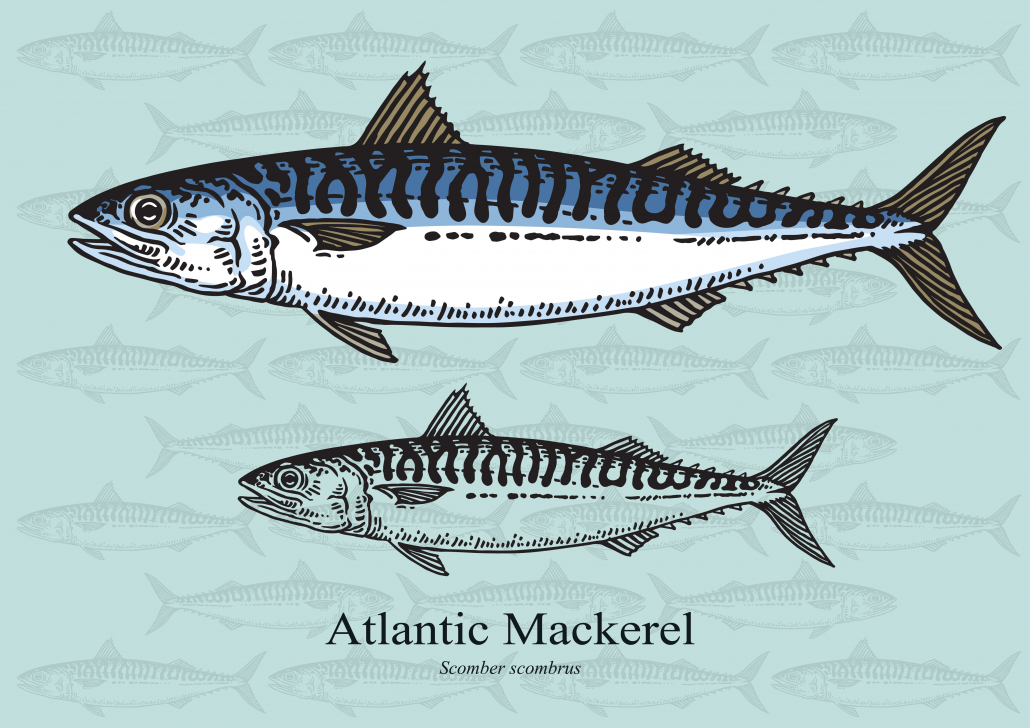
In addition to healthy fats and protein, Atlantic mackerel is loaded with supernutrients like vitamin D, omega-3 fatty acids, vitamin-B and selenium.
At 91% of your RDA in vitamin D per serving, mackerel is one of the bestfood sources of the nutrient on earth.
Vitamin D plays a vital role in supporting your immune defenses against external invaders like viruses. And it is also regulates autimmune functions by reducing inflammatory responses that factor in heart disease and diabetes. 2
Studies also show that vitamin D is effective in reducing the severity of viral infections including COVID-19. 3
As one of the world’s most fatty fish, mackerel a single 3 oz. serving offers a whopping 2990 mg of omega-3.
This is important because our ancestral diet had a 1:1 omega-3 to omega-6 fatty acid ratio. Yet a Standard American Diet is loaded in Omega-6 vegetable and nut oils, raising the ratio to an alarming 1:16.
Studies show that increasing Omega-3 intake can reduce the risk of heart disease.4
Another benefit of mackerel is that it’s one of the most affordable keto fish. You can stock up on 3 lbs of canned mackerel for around $20.
Nutrients in Atlantic Mackerel
| Atlantic Mackerel | Amount per 3 oz. | % RDA |
| Fat | 12g | |
| Saturated Fat | 2.6g | |
| Cholesterol | 60mg | |
| Protein | 16.2g | |
| Vitamins | ||
| Vitamin D | 546.6IU | 91% |
| Vitamin B12 | 7.4µg | 309% |
| B3 | 7.7mg | 48% |
| B2 | .3 | 26% |
| B6 | .3mg | 26% |
| B5 | .8gm | 14% |
| Vitamin A | 453.0IU | 15% |
| Significant Minerals | ||
| Selenium | 37µg | 68% |
| Magnesium | 65mg | 15% |
| Potassium | 267mg | 6.8% |
2. Farmed Arctic Char
As a fatty keto friendly fish, Arctic Char is often viewed as a less expensive alternative to salmon, and a more sustainable choice when compared to farm-raised varieties.
According to the Monterey Bay Aquarium Seafood Watch, Arctic Char gets a “Best Choice” eco-rating. While their ratings for farmed Salmon range from “Good Alternative” to “No, Thanks”.
| Arctic Char (Farmed) | Amount per 3 oz. | % RDA |
| Fat | 11g | |
| Saturated Fat | 1.9g | |
| Cholesterol | 49mg | |
| Protein | 16g | |
| Vitamins | ||
| Vitamin B12 | 7.4µg | 83% |
| B1 (Niacin) | 26% | |
| B3 | 8.4mg | 53% |
| B6 | .5mg | 30% |
| B5 | 1gm | 26% |
3. Anchovies
Briny, oily, and scrumptious, these little fish can add savory dynamism to many meals. They’re also loaded in B3 and selenium while providing significant amounts of iron and hard-to-get copper.
B3 is important for metabolizing food into useable energy, while selenium boosts heart health and thyroid function. 8 9
Like other fatty fish, anchovies are excellent sources of omega-3s. In fact, they have more omega-3 eicosapentaenoic acid (EPA) than an equivalent amount of salmon.
This anti-inflammatory fatty acid combined with the antioxidant power of selenium has been shown to play a role in preventing tumor growth and fighting different types of cancer. 5 6 7
Nutrients in Anchovies
| Anchovies (Wild) | Amount per 3 oz. | % RDA |
| Fat | 15.9g | |
| Saturated Fat | 128g | |
| Cholesterol | 61mg | |
| Protein | 28g | |
| Vitamins | ||
| Vitamin D | 103.5IU | 16.5% |
| Vitamin K | 18µg | 15% |
| Vitamin B12 | 1.4µg | 56% |
| B3 | 30mg | 186% |
| B6 | .3mg | 24% |
| B2 | .6mg | 42% |
| B5 | 1.4mg | 27% |
| Choline | 128mg | 23% |
| Significant Minerals | ||
| Selenium | 102µg | 186% |
| Zinc | 3.6mg | 26% |
| Potassium | 816mg | 21% |
| Calcium | 348mg | 38% |
| Iron | 6.9mg | 39% |
| Copper | .4mg | 57% |
4. Farmed Salmon
Farmed salmon has a lot going for it when it comes B vitamins and omega-3 fats. It also contains more fat than wild salmon.
We’ve found that Whole Foods offers high-quality ethically farmed norwegian salmon at a good price.
It’s worth noting that much of this fat comes from inflammatory omega-6 fatty acids. 13 14 But not to worry, the omega 3:6 ratios in farmed salmon are still in relatively healthy proportions. One small study found that consuming farmed atlantic salmon just twice a week increased blood levels of omega-3 by 50%. 15
Toxins and Antibiotics?
There is some concern about toxins in farmed salmon, including the potential carcinogenic substances PCBs and dioxins. However, studies show that the health benefits overshadow the risks of exposure to low levels of toxins. 16 17
Farmed salmon are also frequently fed antibiotics to protect against the spread of disease in dense populations. However, the use of antibiotics can vary widely depending on where your salmon is farmed.
Repeated exposure to antibiotics in food can lead to antibiotic resistance and sensitivity.
For example, studies have found that chilean farmed salmon can contain up to 530 grams of antibiotics per 1 ton of fish. While Norwegian farmed salmon is subjected to only 1 gram of antibiotics per ton. 18 19
| Farmed Salmon | Amount per 3 oz. | % RDA |
| Fat | 11g | |
| Saturated Fat | 2.6g | |
| Cholesterol | 50mg | |
| Protein | 17g | |
| Vitamins | ||
| Vitamin B12 | 2.75µg | 115% |
| B3 | 7.37mg | 46% |
| B6 | .54mg | 42% |
| B5 | 1.3gm | 26% |
| Significant Minerals | ||
| Selenium | 20.4µg | 37% |
5. Wild King Salmon
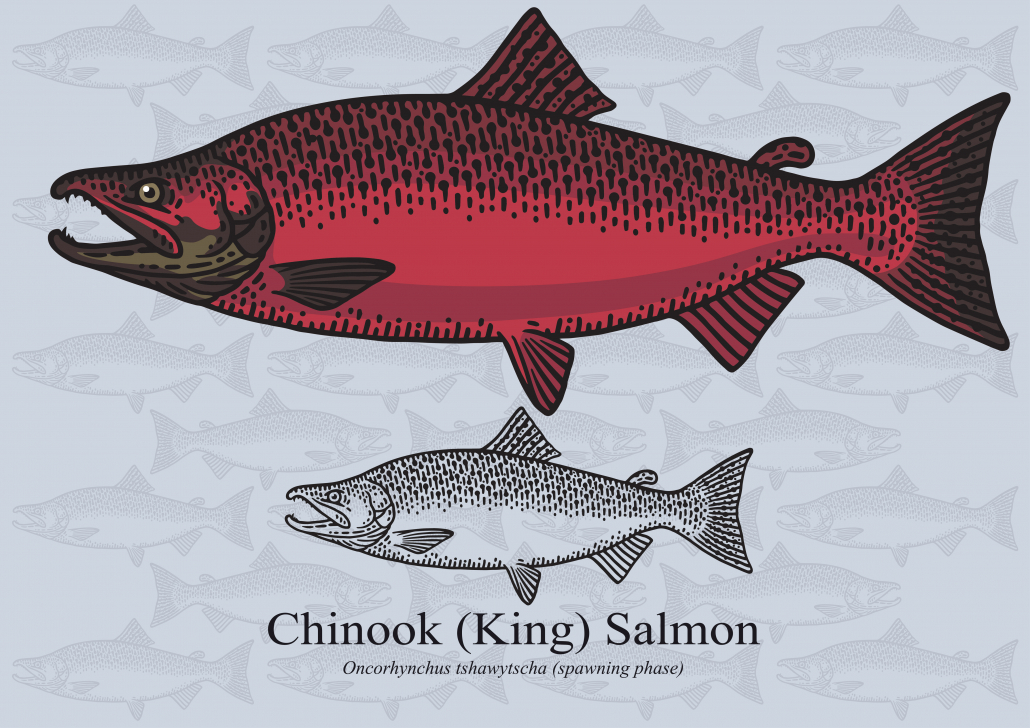
King or Chinook salmon is the largest of the species of Pacific salmon. Reaching up to 100 pounds, they provide the most fat and B vitamins of any wild salmon species with over 300% of B12 per serving.
King salmon is also widely considered the most delicious salmon. The texture is smooth the flavor is mild
If you buy King salmon in bulk you can get it for a price competitive with far inferior fish.
King Salmon Highlights
| King Salmon (Wild) | Amount per 3 oz. | % RDA |
| Fat | 12g | |
| Saturated Fat | 2g | |
| Cholesterol | 61mg | |
| Protein | 20g | |
| Vitamins | ||
| Vitamin B12 | 7.4µg | 308% |
| B3 | 8.4mg | 53% |
| B6 | .3mg | 21% |
| B5 | 1gm | 21% |
| Vitamin A | 453.0IU | 15% |
| B1 | .2mg | 13% |
| B2 | .2mg | 13% |
| Vitamin E | 1.5mg | 10% |
| Significant Minerals | ||
| Selenium | 31.0µg | 56% |
| Phosphorus | 208.0mg | 21% |
| Potassium | 370.0mg | 10% |
| Magnesium | 24.0mg | 6% |
6. Sardines
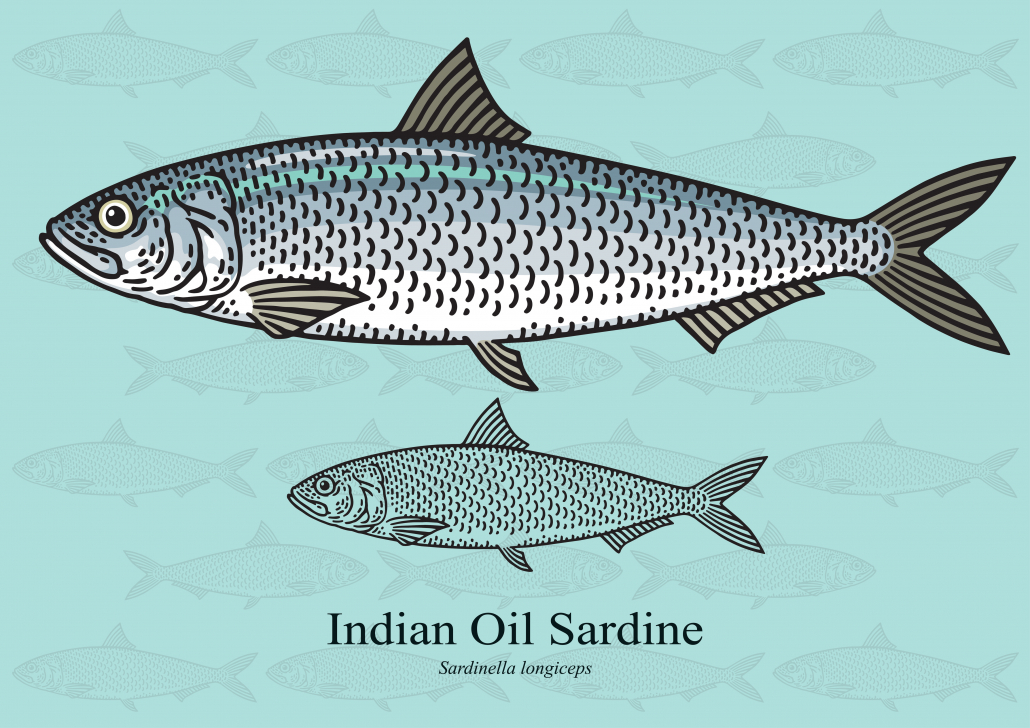
Like the other fatty fish on this list, sardines are high in B vitamins, especially B12, while also providing a decent amount of vitamin D.
Sardines along with anchovies (see above) are also a good source of copper in your keto or carnivore diet food list.
You might be surprised to learn that copper plays an important role in numerous bodily functions, including: 20 21
- producing red blood cells
- Regulating heart rate and blood pressure
- Assisting your body in absorbing iron
- Preventing prostate inflammation
- Production and maintenance of bones, connective tissue, and vital organs including your brain and heart
- Activating your immune system
| Sardines (packed in water) | Amount per 3 oz. | % RDA |
| Fat | 8.9g | |
| Saturated Fat | 2.3g | |
| Cholesterol | 52mg | |
| Protein | 18g | |
| Vitamins | ||
| Vitamin D | 50iu | 20% |
| Vitamin B12 | 7.65µg | 319% |
| B3 | 3.5mg | 22% |
| B6 | .105mg | 8% |
| Choline | 64.6mg | |
| Significant Minerals | ||
| Selenium | 34.5µg | 63% |
| Phosphorus | 311.28mg | 44% |
| Potassium | 290.0mg | 6% |
| Copper | .231mg | 26% |
Lean Fish that Will Need More Fat on Keto
This list of 5 popular fish are some of the leanest. They’re great sources of protein but will need generous additions of healthy keto fats to play a significant role in your keto diet.
| Halibut | 155 | 3.5 | 30.7 | 0 | 20 | 79 |
| Seabass | 135 | 3 | 27 | 0 | 20 | 80 |
| Cod | 113 | 1 | 26 | 0 | 8 | 92 |
| Tuna (Yellowfin) | 150 | 1.5 | 34 | 0 | 9 | 91 |
| Tuna (canned) | 123 | .8 | 27.5 | 1.5 | 6 | 89 |
Keto Fish: The Takeaway
The best fish for keto are fatty fish, and these 6 fatty keto fish options provide more fat soluble vitamins than leaner varieties. They also tend to be high in beneficial omega-3 fatty acids, important vitamin B complexes, and selenium.
Mackerel, sardines, and anchovies also provide impressive amounts of dietary vitamin D, a crucial nutrient that many people are deficient in.
For people on the pescatarian keto diet, these keto friendly fish will be your primary foods. While for carnivore dieters, and nose-to-tail eaters, these fatty fish provide welcome, delicious, and nutrient-packed variety.











